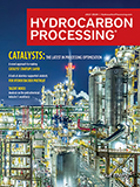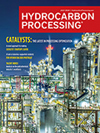Valero predicts ethanol blending costs to double, possibly triple this year
By ALISON SIDER
Valero Energy said it will have to spend two or even three times as much as it did last year to comply with the federal ethanol blending requirement due to the high prices of credits it needs to buy under the law.
The company said in a presentation posted on its website this week it will spend $500 million-$750 million buying the credits this year, compared to $250 million in 2012 and $230 million in 2011.
Refiners have warned a price spike in the market for credits they buy to comply with the ethanol blending requirements will cut into their earnings and consumer wallets. They have urged the Environmental Protection Agency not to increase the volume of ethanol that must be blended into motor fuel this year.
 Under a 2007 law, the EPA mandates a certain amount of ethanol be blended into the US gasoline supply each year. When an ethanol maker produces a gallon, the company receives a credit representing roughly that much ethanol.
Under a 2007 law, the EPA mandates a certain amount of ethanol be blended into the US gasoline supply each year. When an ethanol maker produces a gallon, the company receives a credit representing roughly that much ethanol.
The credits -- called Renewable Identification Numbers (RINs), after the numerical code assigned to each gallon -- can subsequently be bought by refineries to help meet the mandates.
Cost of the credits has shot up from 3 cents/gal in 2012 to more $1/gal at one point recently. The price of the credits has fallen to around 70 cents/gal as buyers appear to have pulled back somewhat, said Denton Cinquegrana, executive editor at the Oil Price Information Service.
"It seems to have found a bit of a comfort zone, though I don't know if you can call that comfortable," Mr. Cinquegrana said of the still elevated prices.
Bill Day, a spokesman for Valero, said it is difficult to know exactly what is driving the opaque market, but it seems to be driven by fears refiners will soon not be able to meet their quotas due to a looming "blend wall" beyond which more ethanol can't be added to motor fuel. "It seems like there's a lot of nervousness in the market about the blend wall," he said, adding it appears there has been a "run on RINs' with speculators hoarding them in anticipation of higher prices in the future.
The EPA's proposal for this year, which could be made final as soon as next month, could force refiners and fuel importers to use upwards of 14 billion gallons of ethanol. Unless demand picks up, that would mean ethanol would comprise more than 10% of US gasoline, a proportion refiners say is a firm upper limit.
Valero said Tuesday that suggestions refiners sell fuel blends with 15% ethanol for newer vehicles are unworkable because car manufacturers don't recommend drivers fill up with higher ethanol-content fuel.
Raymond James analysts wrote in a note Wednesday the ultimate cost to Valero is still a question mark, since costs of complying with the fuel mandate will likely be passed on to consumers. "Ultimately, this cost figure gives investors something to point to, but still doesn't solve the entire puzzle as higher gasoline could likely offset this RIN cost," the analysts wrote
Valero said Tuesday high RIN prices will flow through to consumers and will drive up prices at the pump by encouraging fuel makers to export gasoline to markets that don't have blending requirements and will lower imports of gasoline and diesel, as well.
The solution, the company said, is to eliminate or reduce the renewable fuel standard or to make ethanol blenders, not refiners and importers, responsible for compliance.
Dow Jones Newswires






Comments